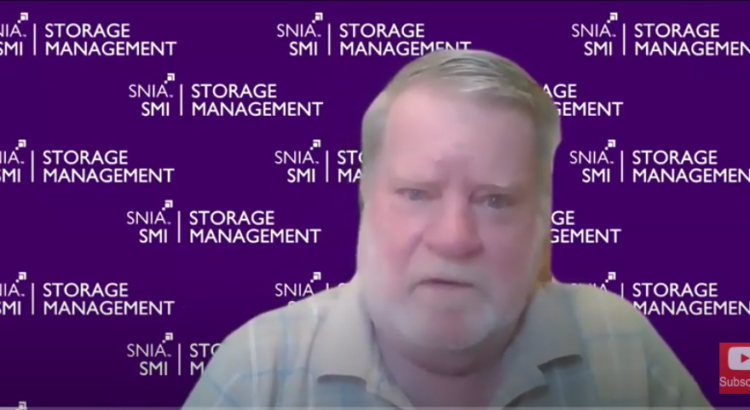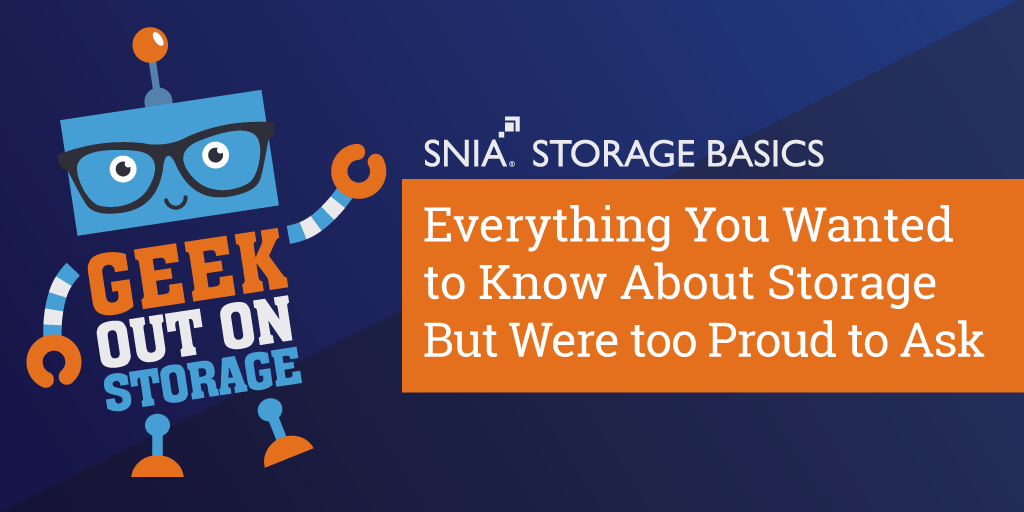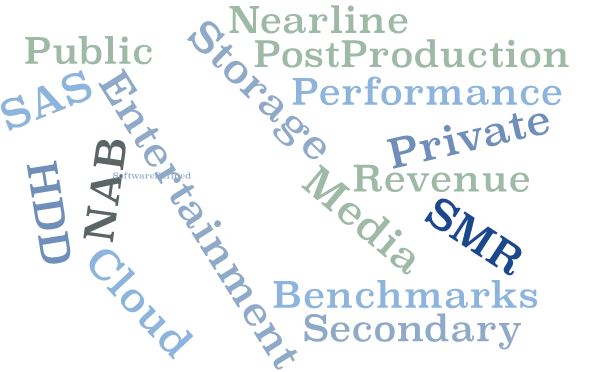Introduction to the Storage Networking Industry Association
 The Storage Networking Industry Association (SNIA) is the largest storage industry association in existence, and one of the largest in IT. It is comprised of over 170 leading industry organizations, and 2,500 contributing members that serve more than 50,000 IT and storage professionals worldwide.
The Storage Networking Industry Association (SNIA) is the largest storage industry association in existence, and one of the largest in IT. It is comprised of over 170 leading industry organizations, and 2,500 contributing members that serve more than 50,000 IT and storage professionals worldwide.
During the nineties, the nascent storage networking field needed a strong voice to communicate the value of storage area networks (SANs) and the Fibre Channel (FC) protocol. SNIA emerged in 1997 when a handful of storage experts realized that there was a need for a unified voice and vendor-neutral education on these emerging technologies to ensure that storage networks became feature complete, interoperable and trusted solutions across the IT landscape.
Since then, SNIA has earned a reputation for developing technologies that have emerged as industry standards. There standards relate to data, storage and information management, and address such challenges as interoperability, usability, complexity and security. Read More
 manageability providing the standards-based interface.
The OpenFabrics Alliance (OFA) is developing an OpenFabrics Management Framework (OFMF) designed for configuring fabric interconnects and managing composable disaggregated resources in dynamic HPC infrastructures using client-friendly abstractions.
Want to learn more? Read More
manageability providing the standards-based interface.
The OpenFabrics Alliance (OFA) is developing an OpenFabrics Management Framework (OFMF) designed for configuring fabric interconnects and managing composable disaggregated resources in dynamic HPC infrastructures using client-friendly abstractions.
Want to learn more? Read More

 manageability providing the standards-based interface.
The OpenFabrics Alliance (OFA) is developing an OpenFabrics Management Framework (OFMF) designed for configuring fabric interconnects and managing composable disaggregated resources in dynamic HPC infrastructures using client-friendly abstractions.
Want to learn more? Read More
manageability providing the standards-based interface.
The OpenFabrics Alliance (OFA) is developing an OpenFabrics Management Framework (OFMF) designed for configuring fabric interconnects and managing composable disaggregated resources in dynamic HPC infrastructures using client-friendly abstractions.
Want to learn more? Read More

 specification and ecosystem are growing in scope to include full enablement and alignment for NVMe® and NVMe-oF client workloads and use cases. By partnering with other industry-standard organizations including DMTF®, NVM Express, and OpenFabrics Alliance (OFA), SNIA’s Scalable Storage Management Technical Work Group has updated the Swordfish bundles from version 1.2.1 and later to cover an expanding range of NVMe and NVMe-oF functionality including NVMe device management and storage fabric technology management and administration.
The Need
Large-scale computing designs are increasingly multi-node and linked together through high-speed networks. These networks may be comprised of different types of technologies, fungible, and morphing. Over time, many different types of high-performance networking devices will evolve to participate in these modern, coupled-computing platforms. New fabric management capabilities, orchestration, and automation will be required to deploy, secure, and optimally maintain these high-speed networks.
specification and ecosystem are growing in scope to include full enablement and alignment for NVMe® and NVMe-oF client workloads and use cases. By partnering with other industry-standard organizations including DMTF®, NVM Express, and OpenFabrics Alliance (OFA), SNIA’s Scalable Storage Management Technical Work Group has updated the Swordfish bundles from version 1.2.1 and later to cover an expanding range of NVMe and NVMe-oF functionality including NVMe device management and storage fabric technology management and administration.
The Need
Large-scale computing designs are increasingly multi-node and linked together through high-speed networks. These networks may be comprised of different types of technologies, fungible, and morphing. Over time, many different types of high-performance networking devices will evolve to participate in these modern, coupled-computing platforms. New fabric management capabilities, orchestration, and automation will be required to deploy, secure, and optimally maintain these high-speed networks. 

 Thanks to all who attended or listened on-demand to our recent SNIA Solid State Storage Initiative (SSSI) webcast on
Thanks to all who attended or listened on-demand to our recent SNIA Solid State Storage Initiative (SSSI) webcast on  In our most recent SNIA Networking Storage Forum (NSF) webcast
In our most recent SNIA Networking Storage Forum (NSF) webcast  The
The 